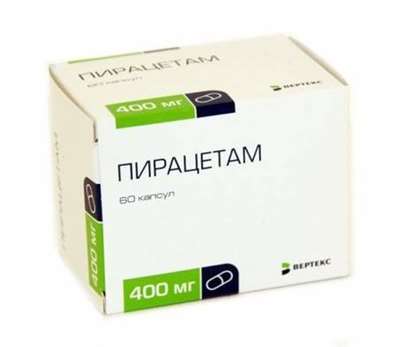FAQ: E. Coli
02 Nov 2016
7 facts about the most studied bacteria and its behavior in the body
Escherichia coli is the most studied creature on earth. At first sequenced genome of a standard laboratory strain. It was known that laboratory strains or lines which have been allocated to different times, slightly different from each other. Some people are able to eat some sugar, while others can not. One can synthesize some essential substance other receives it from the external environment only. Because of their distinguished and biochemical characteristics. Then identified genomic sequence: first the first, then a second and a third, and it was found that the genome of E. coli may differ from each other by a third.

- 1.In those areas of the genome to which are common, substantially identical sequences are 99% identical. It is obvious that this is one gene. At the same time there are pieces that some have and others simply do not. If you look at dozens of new E. coli, it turns out that the proportion of genes, which is common to all, and is present in all E. coli, is quite small, less than a quarter. On the other hand, each new genome that you add, brings dozens of new genes that were not in previous strains.
- 2.The question arises, in this core and that of the periphery. At the heart of their binding sit genes involved in basic cellular processes. They are at all: the basic metabolism and genes that determine the identity of E. coli, sets it apart from other bacteria.
- On the periphery of a lot of genes that, in fact, occur in a very small number of strains or virtually unique. Normally, these genes are not very interesting, it phages, which are integrated into the genome, and it is clear that very soon there will fly. Most of these genes are derived from transposable elements. In terms of metabolism, they are not very interesting, but they are often involved in the pathogenesis.
- 3.Metabolic functions of interest that are present only in some strains. For example, some are able to synthesize cyanocobalamin, vitamin B12, some - not. Or some fatty acids are able to feed and others - no. From the point of view of the person, very interesting genes that determine pathogens. One E. coli lives in the intestines, and thank God, there it is small, and it does not bother anyone. The other E. coli into the intestine and begins dysentery. She is able to produce a toxin that irritates the skin cells, and there is a local inflammation. Or she can make a protein, by which it clings tightly to the epithelium, and again produces a toxin. To improve your digestive system –one should take Complex of Cytamine for digestive system, Ventramin, Stamakort Peptide.
- 4.Generally, these genes are not universal, in other E. coli would universal pathogen. They are different in different strains, and they determine the clinical manifestations. There uropathogenic genetic sticks that in the urogenital tract misbehave. There enterogemmoragicheskie E. coli that cause bleeding from the bowel. Moreover, what it has become clear after the determination of the genomic sequence of the bacteria, which belong even to another genus - Shigella - dysentery pathogens, actually just E. coli, which have acquired a system toxicity, which leads to clinical manifestations of dysentery. Shigella - it is just a clone in E. coli.
- 5.A lot of stories there, when there are any infectious outbreak. There was a story about the unfortunate Japanese children who were poisoned salad with E. coli. There was a story in Germany, when a certain number of people poisoned with E. coli. It simply means that the person in the food chain, in the food gets a strain with a carrier of a new toxin, which people have not seen before, so it has no immunity, or it breaks through the immune system. Accordingly, the case of an outbreak of intestinal infection. It is usually localized quickly with good epidemiological work. But quite often determine the source and can not be.
- The man lives in the stomach rather dense bacterial community, which just does not invade. It's like the market: if you come to the market and has become a trade, it is likely that you will give to the eye and you will not find yourself there. And if you came to the market with fifteen friends and began to trade chances to consolidate much more. Accordingly, if a person has a weak immune system, some problems with its own microflora - he gets sick, even received a small dose of the pathogen, and if everything is in order, he copes with it.
- 6.The ability of bacteria to acquire pathogenic properties in different species is different and apparently the vast majority of bacteria that live with the person, such chances present. And among the beautiful examples of this came about - E. coli, from time to time become pathogens, or Yersinia pestis Yersinia pestis, she of Shigella, is a young clone of a group of related strains, which stood out from an entirely different of Yersinia, their ancestor, Yersinia pseudo-tuberculosis, the causative agent milder disease. And, apparently, the most glaring example - is anthrax, Bacillus anthracis, because it is also a clone of a completely harmless soil bacterium Bacillus cereus. She has two offspring - the causative agent of anthrax in humans and mammals, and still there is the causative agent of a very terrible disease of insects that kills, including Colorado beetles - have pesticides that are based on the toxin from the bacterium: it is for the deadly insects, and the person does not work.
- 7.In fact, the question of the dynamics of the relationship between different strains, how they exchange genes, whereby the connection is maintained - this is a very interesting problem to explore. With all the conventions, we can talk about the E. coli as a pro look. And that, for example, Shigella sonnei is a member of the same species, which we had not realized. Due to what is supported by the basic functional homogeneity described pretty bad. Previously, it was impossible to do, because it was not material. If for some species appears dozens of genomes, then we can explore more of the dynamics of content. There are, for example, a wonderful project in Norway, which will determine the sequence of 200 strains of staphylococci, regarded as distributed resistance to methicillin. And this is almost the antibiotic last line of defense. Resistance to it - this thing is terrible

 Cart
Cart





